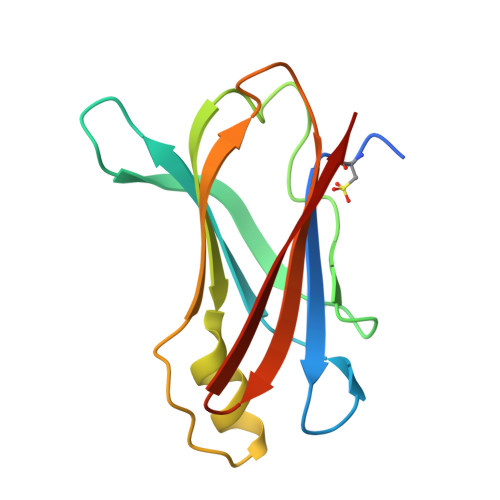Human-Murine Transthyretin Heterotetramers Are Kinetically Stable and Non-amyloidogenic: A LESSON IN THE GENERATION OF TRANSGENIC MODELS OF DISEASES INVOLVING OLIGOMERIC PROTEINS.
Reixach, N., Foss, T.R., Santelli, E., Pascual, J., Kelly, J.W., Buxbaum, J.N.(2008) J Biol Chem 283: 2098-2107
- PubMed: 18006495
- DOI: https://doi.org/10.1074/jbc.M708028200
- Primary Citation of Related Structures:
2QPF - PubMed Abstract:
The transthyretin amyloidoses appear to be caused by rate-limiting tetramer dissociation and partial monomer unfolding of the human serum protein transthyretin, resulting in aggregation and extracellular deposition of amorphous aggregates and amyloid fibrils. Mice transgenic for few copies of amyloid-prone human transthyretin variants, including the aggressive L55P mutant, failed to develop deposits. Silencing the murine transthyretin gene in the presence of the L55P human gene resulted in enhanced tissue deposition. To test the hypothesis that the murine protein interacted with human transthyretin, preventing the dissociation and partial unfolding required for amyloidogenesis, we produced recombinant murine transthyretin and human/murine transthyretin heterotetramers and compared their structures and biophysical properties to recombinant human transthyretin. We found no significant differences between the crystal structures of murine and human homotetramers. Murine transthyretin is not amyloidogenic because the native homotetramer is kinetically stable under physiologic conditions and cannot dissociate into partially unfolded monomers, the misfolding and aggregation precursor. Heterotetramers composed of murine and human subunits are also kinetically stable. These observations explain the lack of transthyretin deposition in transgenics carrying a low copy number of human transthyretin genes. The incorporation of mouse subunits into tetramers otherwise composed of human amyloid-prone transthyretin subunits imposes kinetic stability, preventing dissociation and subsequent amyloidogenesis.
Organizational Affiliation:
W. M. Keck Autoimmune Disease Center, Division of Rheumatology Research, Molecular and Experimental Medicine Department, The Scripps Research Institute, La Jolla, CA 92037, USA. natalia@scripps.edu















